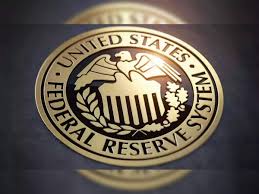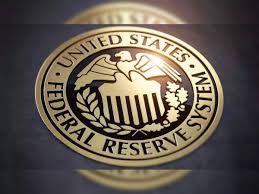
The United States Federal Reserve maintained interest rates unchanged on Wednesday and signalled that it is still leaning towards eventually lowering borrowing costs, but it raised a warning flag over recent poor inflation data, which might delay those rate cuts.
Indeed, Fed Chair Jerome Powell stated that after three months of faster-than-expected price increases in 2024, it "will take longer than previously expected" for policymakers to be confident that inflation will resume its decline towards 2%, which had cheered them much of last year.
That steady development has paused for the time being, and while Powell stated that rate rises were unlikely, he laid the ground for a prospective extension of the benchmark policy rate, which has been held at 5.25%-5.50% since July.
U.S. central bankers still believe the present policy rate is exerting enough pressure on economic activity to keep inflation under control, Powell said, and they are willing to wait as long as necessary for this to become obvious - even if inflation is merely "moving sideways" in the meanwhile.
The Federal Reserve's favoured inflation indicator, the personal consumption expenditures price index, grew at a 2.7% annual pace in March, up from the previous month.
"Inflation is still too high," Powell said at a press conference following the Federal Open Market Committee's two-day policy meeting. "Further progress in bringing it down is not assured and the path forward is uncertain."
Powell maintained his expectation for inflation to decline this year, but said that "my confidence in that is lower than it was."
It is unclear whether rate decreases will occur this year.
"If we did have a path where inflation proves more persistent than expected, and where the labor market remains strong but inflation is moving sideways and we're not gaining greater confidence, well, that would be a case in which it could be appropriate to hold off on rate cuts," Powell said. "There are paths to not cutting and there are paths to cutting. It's really going to depend on the data."
Despite the uncertainties of the present economic situation, Powell's description of rate rises as "unlikely" reassured investors worried about a freshly aggressive Fed head.
U.S. stock and bond prices rose as Powell preached patience, which may delay rate reduction but also sets a high bar for any future rises. The Fed hiked its benchmark policy rate by 5.25 percentage points in 2022 and 2023 to combat rising inflation.
Powell's statements on Wednesday were "notably less hawkish than many feared," according to Evercore ISI analysts. "The basic message was that cuts have been delayed, not derailed."
Investors in Fed-related futures upped their wagers that rate reduction would begin in September rather than later in the year, as prior market pricing suggested.
The Fed's most recent policy statement maintained important components of its economic assessment and policy advice unchanged, stating that "inflation has eased" over the last year and structuring its discussion of interest rates around the conditions under which borrowing costs can be reduced.
"The Committee does not expect it will be appropriate to reduce the target range until it has gained greater confidence that inflation is moving sustainably towards 2%," the Fed said in a unanimously approved statement.
The timing of any rate decrease is uncertain, and Fed officials have expressed strong worry that the opening months of 2024 have done nothing to aid the cause.
"In recent months, there has been a lack of further progress towards the Committee's 2% inflation objective," the Fed stated in its statement.
The US central bank also stated that it will slow the rate at which it shrinks its balance sheet beginning on June 1, allowing just $25 billion in Treasury bonds to drain off each month instead of the current $60 billion. Mortgage-backed securities will continue to deplete by up to $35 billion each month.
The move is intended to prevent the financial system from running out of reserves, as occurred in 2019 during the Fed's previous round of "quantitative tightening."
While the move may soften financial conditions at the margin at a time when the US central bank is attempting to retain pressure on the economy, officials argue that its balance sheet and interest rate instruments serve separate purposes.
The Fed maintained its overall estimate of economic growth, stating that the economy "continued to expand at a steady pace." Job growth has been significant, and the unemployment rate has stayed low.
Powell reconciled this with the comparatively modest 1.6% rise in GDP in the first quarter, claiming that the 3.1% increase in private domestic demand was a better indicator of where the economy stands, with output bolstered by a recent surge in immigration.
When asked about the danger that the United States will enter a period of "stagflation" with stalled growth and increasing prices, Powell said present conditions are nothing like those observed in the late 1970s, when prices rose more than 10% yearly at one time while unemployment was high.
"Right present, we have... rather steady growth... "We have inflation below 3%," Powell remarked. "I don't see the 'stag' and I don't see the 'flation.'"
(Source:www.businesstoday.in)
Indeed, Fed Chair Jerome Powell stated that after three months of faster-than-expected price increases in 2024, it "will take longer than previously expected" for policymakers to be confident that inflation will resume its decline towards 2%, which had cheered them much of last year.
That steady development has paused for the time being, and while Powell stated that rate rises were unlikely, he laid the ground for a prospective extension of the benchmark policy rate, which has been held at 5.25%-5.50% since July.
U.S. central bankers still believe the present policy rate is exerting enough pressure on economic activity to keep inflation under control, Powell said, and they are willing to wait as long as necessary for this to become obvious - even if inflation is merely "moving sideways" in the meanwhile.
The Federal Reserve's favoured inflation indicator, the personal consumption expenditures price index, grew at a 2.7% annual pace in March, up from the previous month.
"Inflation is still too high," Powell said at a press conference following the Federal Open Market Committee's two-day policy meeting. "Further progress in bringing it down is not assured and the path forward is uncertain."
Powell maintained his expectation for inflation to decline this year, but said that "my confidence in that is lower than it was."
It is unclear whether rate decreases will occur this year.
"If we did have a path where inflation proves more persistent than expected, and where the labor market remains strong but inflation is moving sideways and we're not gaining greater confidence, well, that would be a case in which it could be appropriate to hold off on rate cuts," Powell said. "There are paths to not cutting and there are paths to cutting. It's really going to depend on the data."
Despite the uncertainties of the present economic situation, Powell's description of rate rises as "unlikely" reassured investors worried about a freshly aggressive Fed head.
U.S. stock and bond prices rose as Powell preached patience, which may delay rate reduction but also sets a high bar for any future rises. The Fed hiked its benchmark policy rate by 5.25 percentage points in 2022 and 2023 to combat rising inflation.
Powell's statements on Wednesday were "notably less hawkish than many feared," according to Evercore ISI analysts. "The basic message was that cuts have been delayed, not derailed."
Investors in Fed-related futures upped their wagers that rate reduction would begin in September rather than later in the year, as prior market pricing suggested.
The Fed's most recent policy statement maintained important components of its economic assessment and policy advice unchanged, stating that "inflation has eased" over the last year and structuring its discussion of interest rates around the conditions under which borrowing costs can be reduced.
"The Committee does not expect it will be appropriate to reduce the target range until it has gained greater confidence that inflation is moving sustainably towards 2%," the Fed said in a unanimously approved statement.
The timing of any rate decrease is uncertain, and Fed officials have expressed strong worry that the opening months of 2024 have done nothing to aid the cause.
"In recent months, there has been a lack of further progress towards the Committee's 2% inflation objective," the Fed stated in its statement.
The US central bank also stated that it will slow the rate at which it shrinks its balance sheet beginning on June 1, allowing just $25 billion in Treasury bonds to drain off each month instead of the current $60 billion. Mortgage-backed securities will continue to deplete by up to $35 billion each month.
The move is intended to prevent the financial system from running out of reserves, as occurred in 2019 during the Fed's previous round of "quantitative tightening."
While the move may soften financial conditions at the margin at a time when the US central bank is attempting to retain pressure on the economy, officials argue that its balance sheet and interest rate instruments serve separate purposes.
The Fed maintained its overall estimate of economic growth, stating that the economy "continued to expand at a steady pace." Job growth has been significant, and the unemployment rate has stayed low.
Powell reconciled this with the comparatively modest 1.6% rise in GDP in the first quarter, claiming that the 3.1% increase in private domestic demand was a better indicator of where the economy stands, with output bolstered by a recent surge in immigration.
When asked about the danger that the United States will enter a period of "stagflation" with stalled growth and increasing prices, Powell said present conditions are nothing like those observed in the late 1970s, when prices rose more than 10% yearly at one time while unemployment was high.
"Right present, we have... rather steady growth... "We have inflation below 3%," Powell remarked. "I don't see the 'stag' and I don't see the 'flation.'"
(Source:www.businesstoday.in)





